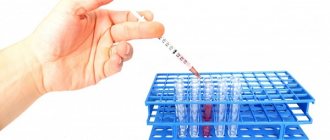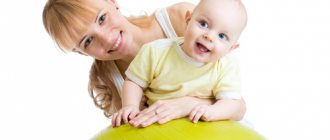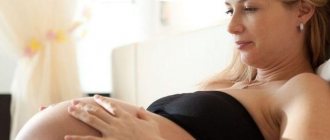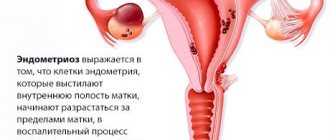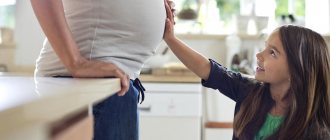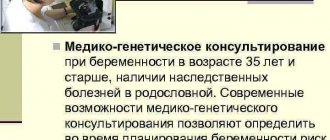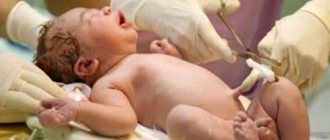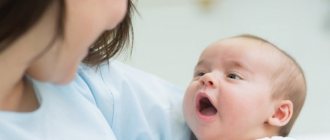Muscovites are increasingly choosing bicycles, scooters, unicycles and hoverboards as a replacement for cars. Alternative transport is environmentally friendly, does not depend on road traffic and even has health benefits. And a new trend is changing city streets.
For example, one of the priorities of the “My District” program was the development of infrastructure for individual mobility devices. You can learn about Moscow’s main successes in this area at the second international exhibition “City: Details”, which will be held from March 26 to 28 at VDNKh.
How to safely move around the city and enjoy your trip even in the cold?
Bike paths or sidewalks: where can you ride?
There are different ways to get around Moscow using alternative transport. For example, according to the traffic rules, owners of scooters are treated like pedestrians, so they can easily ride on sidewalks, as well as pedestrian and bicycle paths.
But cyclists, unless they are small children, should not ride on the sidewalks (this can only be done in extreme cases). Bicycle paths are being laid in the capital especially for them. For example, there are such on the Boulevard Ring, Bolshaya and Malaya Nikitskaya streets, in Kapotnya (this route leads to the Maryino metro station). If the necessary infrastructure is not available, cyclists can ride on the right edge of the roadway or on the side of the road, as well as use public transport lanes (their length in the capital is 850 kilometers). But riding bicycles on roads with “Highway” and “Road for Cars” signs is strictly prohibited.
Benefits of skating
During a bicycle ride, the blood is actively saturated with oxygen. A woman breathes fresh air and takes fairly intense breaths, and therefore the blood is enriched with oxygen, and this is an excellent prevention of hypoxia. The baby receives more oxygen through the uteroplacental bloodstream, which only benefits him. It is also useful for the woman herself to ride - it maintains body weight, trains the muscles of the legs, back, hips, actively strengthens the pelvic muscles, and their good condition is the key to an easier, faster birth, in which the risk of ruptures of the birth canal and perineum will be minimal.
Keeping the muscles of the back and abdomen in good shape will help you more easily endure the physiological difficulties of late gestation, when it becomes physically difficult to carry a large child - your back, legs, and lower back hurt. If a woman plays sports, pregnancy usually proceeds easier.
Do you need to have your own bicycle or scooter in Moscow?
Since 2013, the Velobike city bicycle rental system has been operating in Moscow, offering more than 5.5 thousand bicycles. You can use the service in 65 districts of Moscow - near the metro and MCC, on especially busy streets, near offices and universities, there are more than 500 rental stations. You can take a bicycle from one station and leave it at another. To become a Velobike user, you need to register on the website, in the application or in a special terminal and select a convenient tariff. You can rent a vehicle for a day, or for a whole season.
Starting from 2020, you can also borrow a scooter: there are now about three thousand of them in the city rental system.
Stepper bicycles, an electric bench and drift karts: what else can be rented in Moscow parks
Is it possible for pregnant women to ride a bicycle: medical opinions
Doctors' opinions on this matter are mixed. Some doctors will say that riding an iron horse will only benefit the expectant mother and her baby and you should not give up your favorite activity, especially if you were previously active and constantly engaged in cycling. Others will say that a girl in this position may fall off the bike and this will have a negative impact on the child. Because when a woman becomes pregnant, she not only changes in appearance, but also experiences frequent dizziness, inattention, and fainting if she makes sudden movements. Every girl faces this. It’s just that for some these symptoms appear in the first months, and for others they last throughout pregnancy. Therefore, it is impossible to give a clear positive or negative answer. Let's look at this issue in more detail.
Traveling in the cold season: what do you need to know?
Riding around the capital during the winter season is quite possible, but only if you have a personal bicycle: for now, city rental points operate only in the summer. When traveling, you should follow simple rules.
To make your bike ride comfortable, it is important to dress warmly. A standard winter kit for a cyclist should include thermal underwear, a fleece jacket, sweatpants, a windbreaker and gloves. You should dress a little lighter than for hiking. It is better to take water or warm tea with you.
How to rent a bike
The bicycle must be wiped dry after each ride, and the chain must be lubricated. Before the warm season, it is better to submit your vehicle for technical inspection. At the same time, it is not necessary to wear winter tires: it all depends on the temperature and amount of snow.
But you shouldn’t ride a scooter in the cold. Most models are not designed for low temperatures and snow. In addition, unlike cycling in winter, it is easier to get dirty when riding a scooter.
The dangers of jogging and cycling during a pandemic
The key rule of quarantine measures designed to slow the spread of COVID‑19 is social distancing.
The most authoritative medical organizations in the world strongly recommend staying at home to limit contact with other people. If you cannot do without contacts, you must keep a distance of at least 1 m Q&A on coronaviruses (COVID‑19) (according to the American Centers for Disease Control and Prevention - at least 1.8 m How COVID‑19 Spreads) from others.
Lifehacker now has a Telegram channel, where we publish the latest information about the prevention of coronavirus and the fight against it. Subscribe!
It is assumed that at such a distance the smallest droplets of saliva that another, possibly infected person, releases when talking, coughing, or breathing will not reach you. And you, in turn, will not share your own.
Social distancing is a reliable way to protect people who are standing indoors or outdoors in calm weather. But if a person moves, the safe distance increases significantly.
When you cough or simply breathe heavily while jogging, aerosol droplets of your saliva become airborne. The person who is running after you is forced to run through this cloud of drops Belgisch onderzoek: fietsen, joggen of wandelen doe je best niet achter elkaar in tijden van corona.
Bert Blocken, professor of aerodynamics
And this infected cloud is longer, the higher the speed of the athlete.
How to transport a bicycle on public transport?
Today, bicycles and scooters are called the means of transportation of the “last mile”: they are convenient for getting from metro stations to the office or home. However, transporting a bicycle in the subway is not an easy task; it must be folded and stored in a case. But scooters can be carried without restrictions.
In ground transport, bicycles can be transported free of charge in special areas (the rule is that one passenger can transport only one bicycle). In buses, trolleybuses and trams, bicycle zones are located in the middle of the cabin, and in MCC and MCD trains - in specially marked cars. In "Swallows" and "Ivolgas" you can secure the transport using fastenings.
The benefits of cycling
Undoubtedly, being in the fresh air is useful and irreplaceable for a pregnant woman and her unborn baby. Cycling will help you take your mind off worrying problems, maintain physical fitness, and quickly recover after childbirth in the future.
For pregnant women, exercise on a bicycle helps:
- Eliminate blood stagnation in the lower extremities and pelvis.
- Strengthen and make the muscles in the perineal area more elastic.
- Train your back muscles, which will be very useful when your tummy gets heavy.
In addition, moderate physical activity stimulates the body's production of endorphins - happiness hormones that help maintain a good mood.
And a few more rules
Despite the fact that special documents are not required to drive a bicycle or scooter, users of two-wheeled vehicles are still full participants in the road traffic and are required to comply with traffic rules.
When riding on bike lanes, shoulders, dedicated lanes, or sidewalks, cyclists must be aware of motorists and pedestrians by signaling when maneuvering, using both hands on the handlebars, and being visible. During daylight hours, you need to turn on the running lights, and during dark times, headlights or lanterns. Clothes must have reflective elements.
The rules also prohibit riding while intoxicated, talking on the phone while driving, carrying cargo that interferes with control, as well as passengers, if the bicycle does not have a specially equipped place.
Similar rules apply to riding a scooter, hoverboard and unicycle. It is important not to interfere with other pedestrians and, if necessary (for example, in heavy traffic), be prepared to get off the vehicle.
New metro stations and modern carriages: achievements of the transport system and plans for 2020
Concepts of high alert mode, self-isolation, quarantine
Quarantine
Let's start with the concept of quarantine . It is widely used in everyday life, but in fact it is not used in regulatory documents. That is, there are no restrictions related to quarantine.
Self-isolation
Self-isolation. When communicating, self-isolation refers to the entire range of restrictions introduced at the end of March 2020. However, the decree of the Moscow Mayor talks about two options for self-isolation, which are more stringent when compared with the requirements for other citizens.
Option 1. Self-isolation for 14 days for citizens:
- arrived from foreign trips;
- living together with those who have traveled abroad;
- in respect of which decisions of sanitary doctors on isolation have been adopted.
These issues are discussed in paragraphs 7.2 and 7.3 of the decree of the Moscow Mayor:
7. Oblige citizens:
7.2. Arriving from the People's Republic of China, the Republic of Korea, the Italian Republic, the Islamic Republic of Iran, the French Republic, the Federal Republic of Germany, the Kingdom of Spain, other member states of the European Union, the Republic of Serbia, the Republic of Albania, the United Kingdom of Great Britain and Northern Ireland, the Republic of North Macedonia, Montenegro, the Principality of Andorra, the Kingdom of Norway, the Swiss Confederation, Iceland, the Principality of Monaco, the Principality of Liechtenstein, the Republic of Moldova, the Republic of Belarus, Ukraine, Bosnia and Herzegovina, the Vatican, the Republic of San Marino, the Republic of Croatia, the United States of America, in addition to the measures provided for in paragraph 7.1 of this decree, ensure self-isolation at home for a period of 14 days from the date of return to the Russian Federation (do not attend work, study, minimize visits to public places).
7.3. Those living together during the period of isolation with the citizens specified in paragraph 7.2 of this decree, as well as with citizens in respect of whom decisions of sanitary doctors on isolation have been adopted, must ensure self-isolation at home for the period specified in paragraph 7.2 of this decree, or for the period specified in the decrees of sanitary doctors.
In this case, you need to pay attention that paragraph 7.2 refers to the need to minimize visits to public places .
Option 2. Self-isolation for risk groups from March 26 to May 1, 2020.
8. From March 26, 2020 to May 1, 2020:
8.1. Oblige citizens over the age of 65 to comply with the self-isolation regime, as well as citizens with diseases specified in Appendix 5 to this decree. The self-isolation regime must be ensured at the place of residence of these persons or in other premises, including residential and garden houses.
According to the decree of the Moscow Mayor, the risk group includes:
- People over 65 years of age.
- People suffering from the diseases listed below.
Appendix 5. List of diseases requiring self-isolation
1. Disease of the endocrine system - insulin-dependent diabetes mellitus, classified in accordance with the International Classification of Diseases - 10 (ICD-10) with a diagnosis of E10. 2. Respiratory diseases from the following: 2.1. Other chronic obstructive pulmonary disease classified according to ICD-10 under diagnosis J44. 2.2. Asthma classified according to ICD-10 by diagnosis J45. 2.3. Bronchiectasis, classified according to ICD-10 with diagnosis J47. 3. Disease of the circulatory system - cor pulmonale and pulmonary circulation disorders, classified in accordance with ICD-10 according to diagnoses I27.2, I27.8, I27.9. 4. The presence of transplanted organs and tissues classified in accordance with ICD-10 according to diagnosis Z94. 5. Disease of the genitourinary system1 - chronic kidney disease stages 3-5, classified in accordance with ICD-10 according to diagnoses N18.0, N18.3 - N18.5. 6. New growths from number 2: 6.1. Malignant neoplasms of any localization1, including independent multiple localizations, classified in accordance with ICD-10 according to diagnoses C00 - C80, C97. 6.2. Acute leukemias, high-grade lymphomas, relapses and resistant forms of other lymphoproliferative diseases, chronic myeloid leukemia in the phases of chronic acceleration and blast crisis, primary chronic leukemias and lymphomas1, classified in accordance with ICD-10 according to diagnoses C81 - C96, D46. 1 During self-isolation, it is allowed to visit a medical organization regarding the underlying disease. 2 Self-isolation does not apply to patients assigned to the third clinical group (oncology).
If you carefully study the above quote, you will notice that with the second option of self-isolation for some diseases, it is allowed to visit medical organizations for the underlying disease.
Summarizing the section on self-isolation, it must be said that the regulatory document does not make it possible to unambiguously understand in what cases and why you can leave your living quarters. In this regard, I propose to assume that if for some reason a driver ends up in the self-isolated group, then should not drive a car or simply leave his home . At least, this is the conclusion that explanations from officials are pushing towards.
High alert mode
By high alert we mean a situation that applies to absolutely all drivers (including those who are in self-isolation).
12. Oblige:
12.3. Citizens should not leave their place of residence (stay), except in cases of seeking emergency (urgent) medical care and in cases of other direct threat to life and health, in cases of traveling to (from the place) of carrying out activities (including work) that have not been suspended in in accordance with this decree, carrying out activities related to movement within the territory of the city of Moscow, if such movement is directly related to the implementation of activities that are not suspended in accordance with this decree (including the provision of transport and delivery services), as well as following to the nearest place of purchasing goods, works, services, the sale of which is not limited in accordance with this decree, walking pets at a distance not exceeding 100 meters from the place of residence (stay), removing waste to the nearest place of waste accumulation.
The restrictions established by this paragraph do not apply to cases of medical care, the activities of law enforcement agencies, bodies for civil defense and emergency situations and their subordinate organizations, supervisory bodies in the field of consumer rights protection and human well-being, and other bodies in terms of actions directly aimed at protecting the life, health and other rights and freedoms of citizens, including combating crime, protecting public order, property and ensuring public safety.
In high alert mode, it is prohibited to leave your apartment (house) in all cases, except:
- seeking emergency medical care;
- for movement to the place of work, unless work must be suspended in accordance with the decree;
- for movement while performing work, unless the work must be suspended;
- to go to the nearest place of purchase of goods, works, services, the sale of which is not limited;
- walking pets at a distance of no more than 100 meters from the house;
- removal of waste to the nearest container site.
Moreover, the decree does not prohibit driving to the desired location by car in the cases listed above. Naturally, this does not apply to walking animals and taking out garbage; these operations are performed on foot. But in other situations you can use a car .
However, the list of situations requires clarification. The fact is that many media, in order to make the news shorter, write that you can only leave the house to buy groceries. In fact, the list of situations is much wider. I recommend that you study paragraph 3.2 in full, and below will be comments on this paragraph:
3. Temporarily suspend:
3.2. From March 28, 2020 to May 1, 2020:
3.2.1. The operation of restaurants, cafes, canteens, buffets, bars, snack bars and other public catering establishments, with the exception of take-out services without citizens visiting the premises of such enterprises, as well as the delivery of orders. This restriction does not apply to canteens, buffets, cafes and other catering establishments that provide meals for employees of organizations.
3.2.2. The operation of retail trade facilities, with the exception of pharmacies and pharmacy points, specialized retail trade facilities in which contracts for the provision of communication services are concluded and the sale of communications equipment related to these services (including mobile phones, tablets), specialized retail trade facilities selling medical and optical-ophthalmological products (equipment), pet supplies, as well as retail trade facilities in terms of the sale of food products and (or) non-food essential goods specified in Appendix 1 to this decree, the sale of goods remotely, including with the condition of delivery .
3.2.3. The operation of beauty salons, cosmetics, spa salons, massage parlors, solariums, baths, saunas and other facilities in which similar services are provided that require the in-person presence of a citizen, with the exception of services provided remotely, including with the condition of delivery.
3.2.4. Visits by citizens to areas of citywide significance specified in Appendix 2 to this decree.
3.3. The work of clubs and sections of the Moscow Longevity program, the organization of recreation for citizens and other similar events carried out at the expense of the budget of the city of Moscow, the conduct of other leisure activities in social service centers for the population, as well as the work of institutions of the library network of the city of Moscow and cultural and leisure institutions . The procedure for rescheduling previously confirmed events within the framework of organizing leisure for citizens and other similar events or replacing them with compensation is determined in accordance with legal acts establishing the procedure for organizing such recreation.
3.4. From March 21, 2020 to May 1, 2020 inclusive, visits by students to educational organizations providing general and additional education, providing sports training, as well as professional educational organizations implementing secondary vocational education programs, ensuring the implementation of educational programs of general and secondary vocational education using e-learning and distance learning technologies in the manner determined by the administration of the educational organization. At the same time, if there is an appropriate decision of parents or other legal representatives, provide for students in grades 1-4 inclusive the work of duty groups of no more than 12 students. Ensure compliance with the sanitary regime in these groups.
3.5. Provision of government and other services on the premises of Moscow city authorities and government institutions of the city of Moscow (including multifunctional centers for the provision of government services on the territory of the city of Moscow), with the exception of services, the provision of which can be carried out exclusively in these premises, subject to prior registration of citizens . At the same time, government and other services, the provision of which is possible in electronic form, are provided exclusively in electronic form.
3.6. Visits by citizens to city cemeteries specified in Appendix 3 to the resolution of the Moscow Government of April 8, 2008 N 260-PP “On the condition and measures to improve funeral services in the city of Moscow”, with the exception of cases of applying for registration of burial services and participation in the burial (burial).
4. Temporarily suspend from April 13, 2020 to May 1, 2020:
4.1. Visits by citizens to territories, buildings, structures, structures (premises in them), where the activities of organizations and individual entrepreneurs are carried out, specified in Appendix 3 to this decree, taking into account the features established in it. ... 4.2. Provision of services for short-term rental of cars (car sharing services), services for transporting passengers on order, taxi services, with the exception of taxi services provided by carriers that have permission to carry out activities for transporting passengers and luggage by passenger taxi in the territory of the city of Moscow and (or) Moscow region areas. At the same time, the provision of services of the city bicycle rental system is not subject to suspension.
of all retail stores is prohibited , with the following exceptions (clause 3.2.2):
- pharmacies;
- communication shops;
- stores selling pet products;
- shops selling food products (food);
- shops selling essential goods (sanitary mask, hand sanitizer, wet wipes, dry wipes, toilet soap, laundry soap, toothpaste, toothbrush, toilet paper, sanitary pads, washing powder, baby diapers, matches, candles, diaper for a newborn, baby shampoo, baby diaper rash cream, feeding bottle, pacifier, gasoline, diesel fuel, liquefied natural gas).
In addition, the work of some organizations providing services (clauses 3.2.1, 3.2.3 - 3.5) and visiting city cemeteries (clause 3.6 - from April 9, 2020).
Also, from April 13 to April 19, 2020, it is prohibited to use car sharing and visit organizations engaged in the types of activities specified in Appendix No. 3:
1 Crop and livestock farming, hunting and the provision of related services in these areas (with the exception of agricultural producers carrying out spring field work, and continuous cycle enterprises, the suspension of activities of which is impossible due to production and technical conditions) 2 Forestry and logging 3 Fishing and fish farming 4 Processing wood and production of wood and cork products, production of products from straw and materials for weaving 5 Production of motor vehicles, trailers and semi-trailers 6 Production of other vehicles and equipment 7 Wholesale and retail trade in motor vehicles and motorcycles and their repair (except for repair of vehicles , ensuring the functioning of the city’s transport system and enterprises that support the city’s life) 8 Wholesale trade, except for wholesale trade of medicines and consumables for laboratory research, vehicles and motorcycles (except for wholesale trade of food products, medical and optical-ophthalmological products (equipment ), means of communication, pet supplies, as well as non-food essential goods specified in Appendix 1 to this decree) 9 Retail trade, except for trade in motor vehicles and motorcycles (with the exception of pharmacies and pharmacy points, specialized retail trade facilities where contracts are concluded for the provision of communication services and the sale of communication equipment related to these services (including mobile phones, tablets), specialized retail facilities selling medical and optical-ophthalmological products (equipment), pet supplies, as well as retail facilities for the sale of food products and (or) non-food essential goods specified in Appendix 1 to this decree, sales of goods remotely, including with the condition of delivery) 10 Activities of water transport (except for cargo transportation and special watercraft) 11 Activities for the provision of food and drinks ( with the exception of take-out services without citizens visiting the premises of such enterprises, as well as delivery of orders; canteens, buffets, cafes and other catering establishments that provide meals for employees of organizations) 12 Production of films, videos, publishing of sound recordings and music 13 Operations with real estate 14 Professional, scientific and technical activities, with the exception of activities aimed at developing a treatment for the new coronavirus infections (2019-nCoV) 15 Activities in the field of law and accounting, management consulting 16 Activities in the field of architecture and engineering design; technical testing, research and analysis (except for railway transport and metro facilities) 17 Advertising activities and market research 18 Other professional scientific and technical activities 19 Activities for technical inventory of real estate 20 Renting and leasing 21 Employment and personnel selection activities 22 Tourism activities agencies and other organizations providing services in the field of tourism 23 Educational activities (except for cases established by this decree) 24 Activities for organizing and conducting gambling and betting, organizing and conducting lotteries 25 Activities in the field of sports, recreation and entertainment 26 Activities public organizations (except for volunteer activities) 27 Repair of computers, personal items and household items (except for the operation of delivery services and remote services) 28 Activities to provide other personal services 29 Production of textiles 30 Production of clothing 31 Production of leather and leather goods leather 32 Production of rubber and plastic products (except for the production of packaging products for the food and pharmaceutical industries and medical activities) 33 Furniture production 34 Repair and installation of machinery and equipment 35 Construction of buildings 36 Construction of engineering structures 37 Specialized construction work 38 Production of paper and paper products ( excluding the production of packaging products for the food and pharmaceutical industries and medical activities) 39 Production of other non-metallic mineral products 40 Metallurgical production 41 Production of finished metal products, except machinery and equipment 42 Production of computers, electronic and optical products 43 Production of electrical equipment 44 Production of machinery and equipment not included in other groups 45 Production of other finished products
That is, if you need to visit a place, you need to carefully study the above paragraphs of the regulatory document and understand whether its work has been suspended or not. If, in accordance with the decree, the organization can continue to operate, then you can contact it. This includes getting there by car .
Note. It is important to understand that even if a company is not required to suspend work by law, its manager can independently make such a decision. Therefore, before any trip you should call and find out if the organization is open.
When to stop?
During pregnancy, you may feel unwell and physically weak. If so, cycling may not be advisable. However, during both of her pregnancies, Sarah Robin rode her bike until contractions began. Jane Henshaw from Castlecary also rode her bike to the hospital. Svea Sayers rode her bike even the day after her contractions started. All her children were late, but completely healthy. Be prepared for the fact that in the second and third trimesters you will ride more slowly and breathe heavily. Listen to your body and choose when to stop cycling. Or maybe not stop at all?
Why do pregnant women need cycling?
Active exercises like cycling are just as beneficial as swimming or yoga, and if you're used to that kind of exercise, that's great. During pregnancy, you will receive additional bonuses from a bicycle, which has the following properties:
- develops endurance, which you will need during childbirth;
- strengthens leg strength;
- develops the pelvic muscles and develops the hip joints;
- improves the cardiovascular system;
- develops the respiratory system;
- reduces the likelihood of stretch marks;
- reduces the risk of obesity;
- serves as a prevention of varicose veins;
- relieves swelling;
- calms, gives positive emotions, saves from insomnia;
- reduces the load on your legs, you no longer move your enlarged body on your legs, but carry it where it needs to be, while getting healthier;
- distracts from problems;
- allows you to keep yourself in good shape and muscle tone;
- strengthens the muscles of the back and buttocks;
- Serves as a prevention of congestion in the pelvis.
So pregnancy and cycling are not mutually exclusive things at all.
At different stages of pregnancy there are different nuances:
First trimester. This is the most important time for the fetus, it must gain a foothold, get comfortable, and it does not need shaking at all, since at this time there is still a risk of miscarriage
Therefore, in gymnastics of the 1st semester, and in swimming, and in riding, everything must be done very gently and carefully, drive the bike only on flat terrain, without going anywhere, in order to avoid an unplanned situation
Second trimester. The body has already become accustomed to its innovations, toxicosis has left us, there is fatigue, but just at this time we can turn it into energy thanks to movement. You will immediately feel a surge of strength, as if you are going back in time, riding will reduce pain and give you energy
But don't forget that you are pregnant and take every precaution to prevent any surprises
Third trimester. The tummy will begin to grow strongly, and the baby will often remind you of itself. During this period, avoid positions where your tummy may rest on the steering wheel. Avoid driving uphill to avoid shortness of breath. As soon as you feel that your tummy is getting in the way, trust your body and free it from cycling.
Safety for a pregnant woman while cycling
If everything is fine with your health and you know how to ride well, ride to your health, but wisely, not performing feats, but enjoying cycling. Your activity should be reasonable, so set yourself short-term and pleasant goals. You already have much less energy, and you should give it to yourself and your child, so don’t think about long and complex routes.
- Ride on flat terrain, without bumps, bumps and other obstacles, ride calmly and comfortably, breathe and enjoy life.
- Your bicycle must be in perfect technical condition and adapted to your weight and volume. Excellent cushioning is not negotiable.
- It is better to wear bright colored clothes so that you can be seen from afar. And also natural and free to move.
- Shoes should be comfortable and with well-supported feet.
- Choose a route that is convenient and easy. Mentally get rid of all the slides, descents and ascents, steps and curbs; even if the route is longer, it should be easy.
- It will be better if you do not travel alone.
- Listen to your body and it will tell you everything. If you start to feel dizzy or tired, get off the bike.
The benefits of cycling
Life activity will never harm any person. On the contrary, it can only bring benefits. All this fully applies to the bicycle. By leisurely driving this type of transport you can achieve the following conditions:
- Such walks are quite a good distraction from pressing problems, which makes a woman more calm and balanced in her behavior. This will undoubtedly affect the unborn child.
- Using a bicycle, a woman will always be in good physical shape.
- The back muscles and those located in the perineal area are strengthened.
- Using a bicycle will eliminate congestion in the pelvic organs. Similar signs will disappear in the lower extremities.
If there are no contraindications, cycling will promote rapid recovery in the postpartum period. It promotes the production of endorphins, which are considered hormones of happiness. They can improve the mood of the expectant mother.
